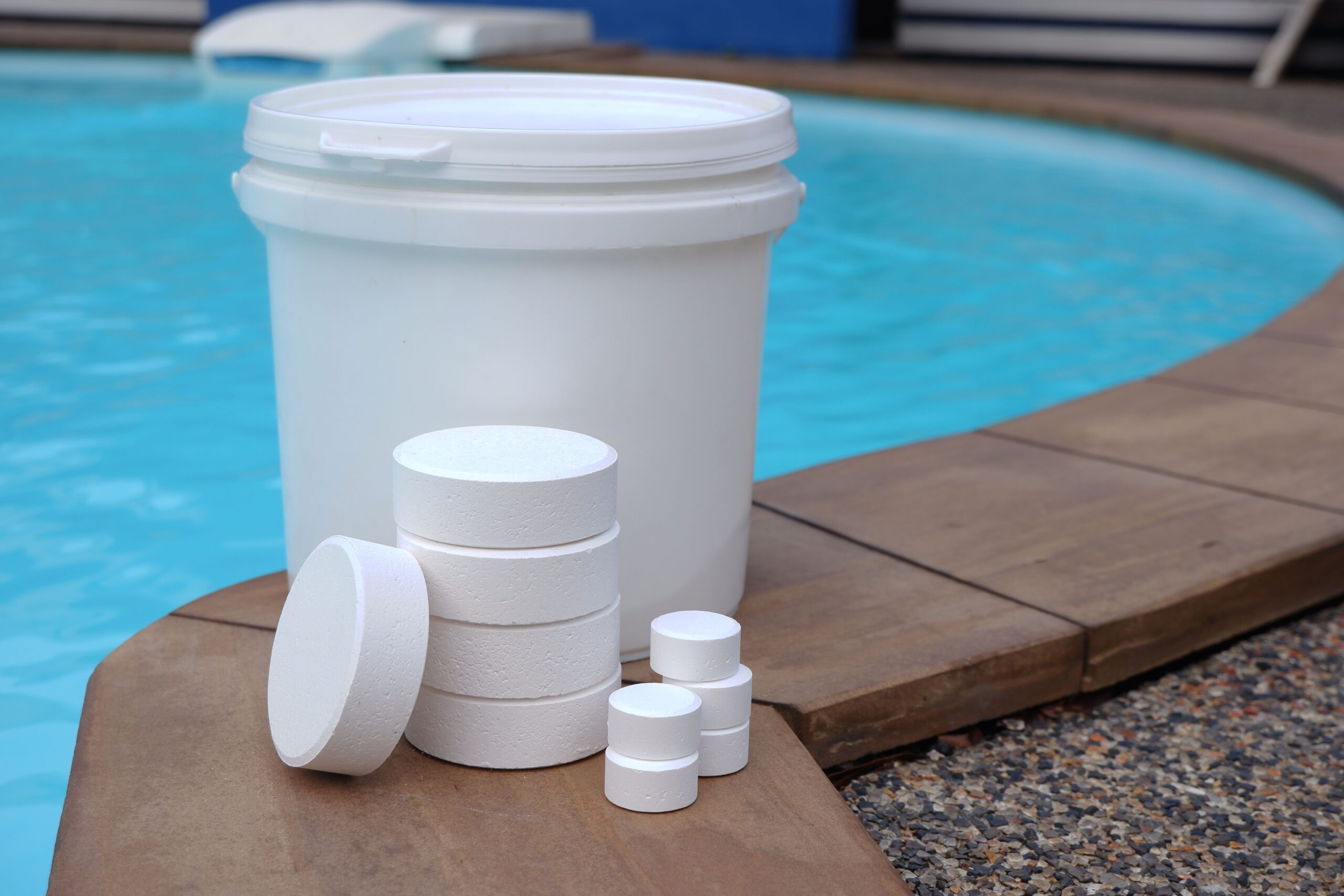Keeping your pool water crystal clear and safe isn’t just about skimming leaves or running the filter. Behind the scenes, the science of pool chemistry plays a crucial role in ensuring your pool remains clean, comfortable, and ready for swimming. Understanding the balance of pH, chlorine, and alkalinity can seem complex, but once broken down, it’s easier than you think. Here’s a guide to help you understand the basics of pool chemistry and why it matters.
pH Levels: The Balance of Acidity and Alkalinity

What is pH?
pH measures how acidic or basic (alkaline) your pool water is on a scale of 0 to 14. A pH of 7 is neutral, while anything below 7 is acidic, and anything above 7 is basic. For swimming pools, the ideal pH range is 7.2 to 7.6.
Why is pH Important?
• Comfort: If the pH is too low (acidic), the water can irritate your skin and eyes. It can also corrode pool equipment and surfaces.
• Effectiveness of Chlorine: Chlorine, the primary sanitizer, works best when the pH is in the correct range. If pH is too high, chlorine becomes less effective.
• Water Balance: Proper pH helps maintain balanced water chemistry and prevents issues like scale formation or corrosion.
How to Adjust pH:
• If the pH is too low, add a pH increaser like sodium carbonate (soda ash).
• If the pH is too high, add a pH decreaser like muriatic acid or sodium bisulfate.
Chlorine: The Pool’s Sanitizer

What is Chlorine?
Chlorine is a chemical that sanitizes your pool by killing bacteria, algae, and other contaminants. It’s a must-have for clean, safe water.
How Chlorine Works:
When added to water, chlorine forms hypochlorous acid (HOCl), which attacks and destroys harmful microorganisms.
Ideal Chlorine Levels:
For residential pools, the recommended free chlorine level is 1.0 to 3.0 parts per million (ppm).
Why Chlorine Matters:
• Keeps the water clean and safe to swim in.
• Prevents algae growth.
• Protects swimmers from harmful bacteria and germs.
Chlorine Tips:
• Regularly test chlorine levels to ensure they stay within range.
• Use stabilized chlorine to protect it from being broken down by UV rays.
• Shock your pool weekly (or after heavy use) to break down chloramines and restore chlorine’s effectiveness.
Alkalinity: The pH Stabilizer

What is Alkalinity?
Total alkalinity refers to the amount of alkaline substances in your pool water, which act as a buffer to stabilize the pH. The ideal total alkalinity range is 80 to 120 ppm.
Why Alkalinity Matters:
• Prevents pH Swings: Alkalinity keeps pH levels stable. Without proper alkalinity, your pH could fluctuate dramatically, making it harder to maintain balance.
• Protects Surfaces and Equipment: Low alkalinity can cause corrosive water, while high alkalinity can lead to scaling on pool surfaces.
How to Adjust Alkalinity:
• If alkalinity is too low, add baking soda (sodium bicarbonate).
• If alkalinity is too high, use muriatic acid or a pH decreaser.
Why Pool Chemistry Matters
Understanding and maintaining pool chemistry isn’t just about clear water—it’s about creating a safe, comfortable, and enjoyable swimming environment for you and your family. By mastering the balance of pH, chlorine, and alkalinity, you’ll protect your pool, your equipment, and most importantly, your health.
So, grab your test kit, monitor those levels, and enjoy a sparkling, clean pool all season long!
Ready to learn more about pool care and maintenance? Check out our previous post on The Secrets to Crystal Clear Water: Tips for Maintaining Water Quality


Comments